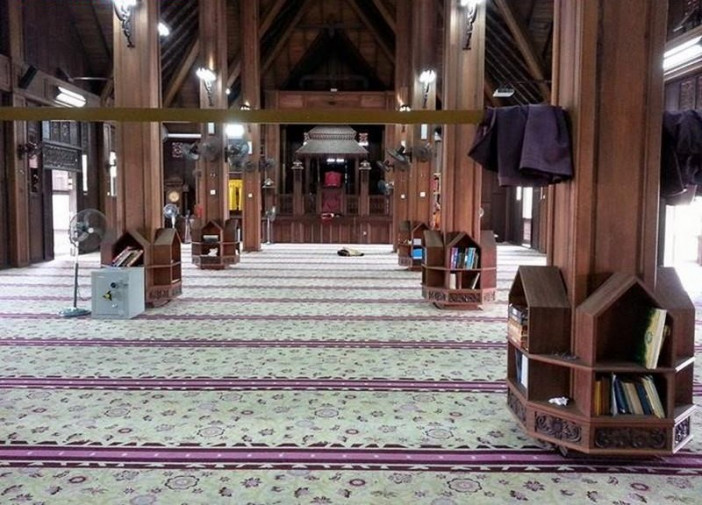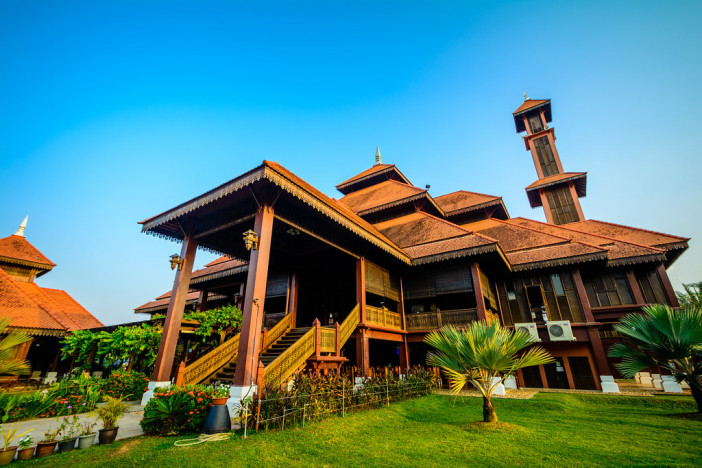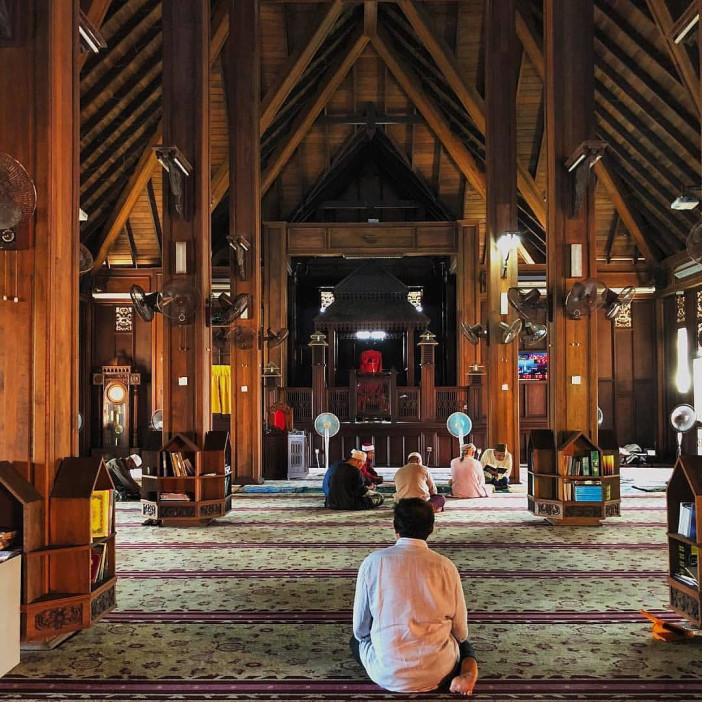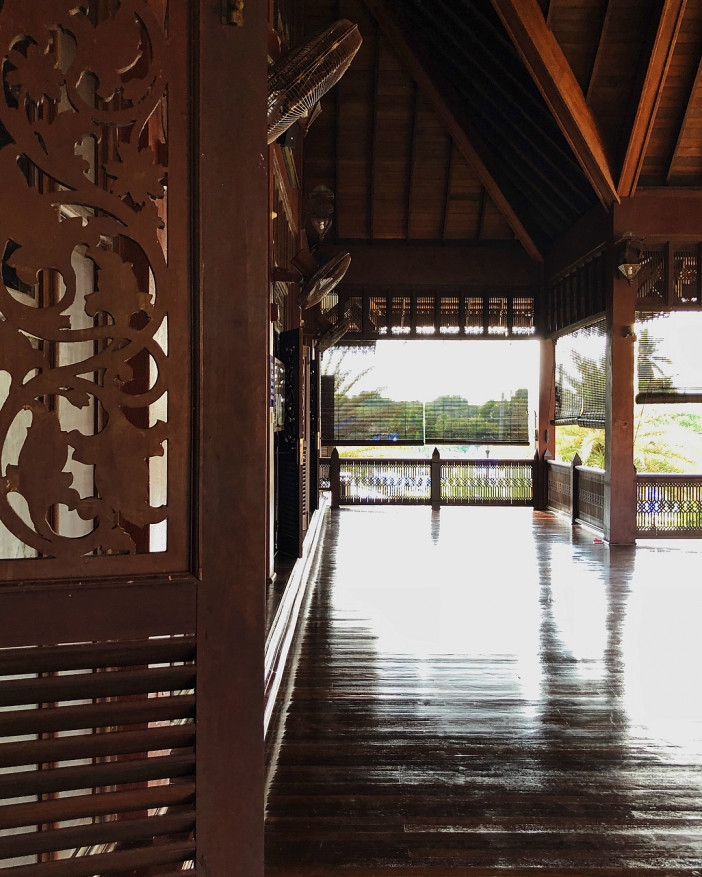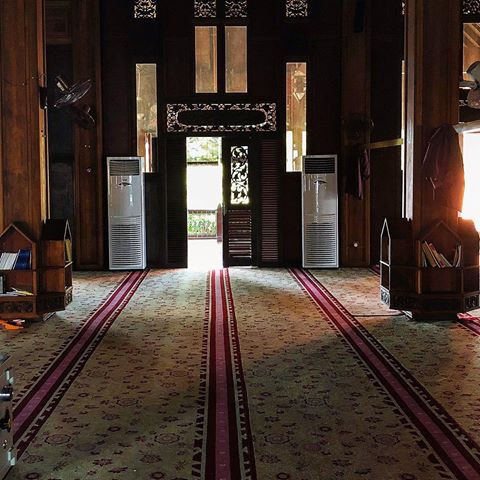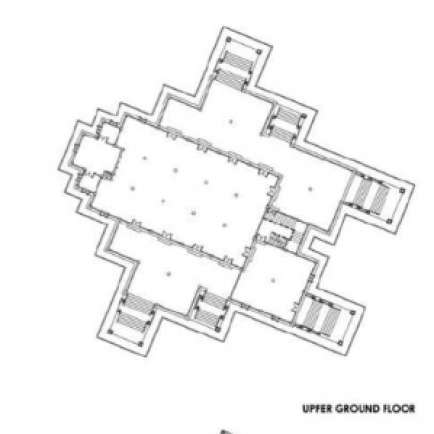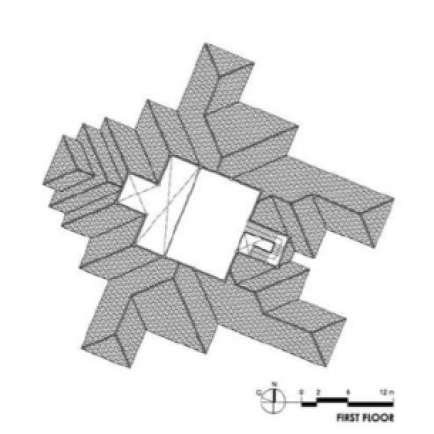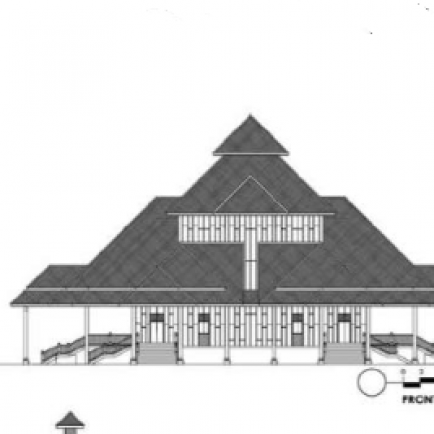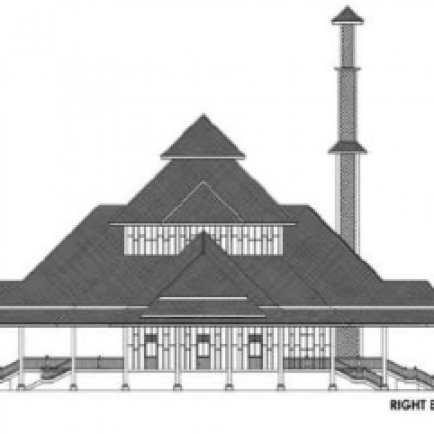Ulul Albab Mosque
History
it is a beautifully designed mosque symbolizing the greatness and high civilization of Islam of Nusantara.
The Ulul Albab Mosque, which was formerly known as the Seberang Jertih Wood Mosque, is located about one kilometer from the town of Jertih between the mandatory destination to visit Terengganu.
Estimated 90 percent of the timber material while the rest is restored and balau, the mosque offers an attractive design based on Malay craftsmanship blended with Islamic features.
The unrivaled landmark worth RM12 million was built in 2009 and is capable of accommodating 1,500 pilgrims at one time. It began to be used on July 4, 2011.
The Sultan of Terengganu, Sultan Mizan Zainal Abidin was pleased to declare the name Ulul Albab Mosque when opening the mosque six years ago.
From the main road junction, the mosque is striking with the beauty of its art when all the main doors are carved in clouds, flowers and carved scriptures.
In fact, the mosque was built to replace the old mosque in the original site of the building built in the era before independence on a 0.2 hectare site.
Urban and Architectural
Only the main pillar of the mosque building and the floor use concrete, but its surface is coated with bald wood.
The mosque building is three stories tall and has a foyer open space on the second floor as a place to perform prayers.
Additionally, mosque buildings are also equipped with meeting room facilities, traveler's rooms, lecture halls, prayer rooms for disabled people and corpses management rooms.
On top of the mosque's main entrance is carved with the holy verses of the Koran ie praying out and entering the mosque, while the front fence of the pulpit is carved by the songket weaving of Terengganu.
Similarly, the wooden fence in the foyer room is also conceptualized by the songket woven pattern of the state.
Interestingly, the mosque was built using puncture techniques that did not use nails.
The abstract element of the wood carvings at the head of the mosque stairs illustrates the waves that are very synonymous with the life of the inhabitants of the east coast.
The ground floor of the mosque is a multipurpose hall for any occasion, while the third floor serves as a library.
The design of the five mosque design features local and archipelago features taking the concept of the Kampung Laut Tumpat mosque, one of the oldest mosques in the country which is said to be over 250 years old.
Indeed, it is characterized by an old Malay mosque that almost always has its own and its floor is elevated from the ground to prevent water and animals from entering the mosque.
Its rooftop roof is a triangular roof that rises up to launch rainwater drainage so as not to easily break wood.
Between the roof level there is a window-shaped room for airflow and the light functions suing and provides comfort.
The entire mosque building is covered with a decorated widow's wall while the 12 main doors of the prayer room are decorated with a large cloud pattern and the pulpit fence takes the Terengganu songket weaving motif.
Six mosque staircases are described by abstract carvings depicting waves and turtles carrying travel symbols have not stopped and are still far away.
Tempayan and rubber pads are placed on the steps to wash their feet. Although the mosque comes with traditional designs, it can still be regarded as a contemporary work to be the prestige of the Malay archipelago and culture.
Description
In the spirit of reviving the traditional Malay vernacular characteristics and craftsmanship, Masjid Ulul Albab was unveiled as a replacement to the old mosque in the town of Jerteh, Terengganu. Unlike the common postmodern mosque designs in Malaysia, the mosque was built without the use of onion- shaped domes; instead, it was built using Malay traditional carvings and the use of hip roofs of various sizes. Officiated by the Sultan of Terengganu, Sultan Mizan Zainal Abidin in 2012, the mosque has since become a focal attraction in this area. Surrounded by a police station and many residential houses, the mosque portrays the thriving traditional Malay woodcarving industry that has flourished in the East Coast state of Terengganu, thus keeping alive and promoting the state’s traditional skills.
References
https://itc.gov.my/listings/masjid-ulul-albab-masjid-kayu-seberang-jerteh/
https://ms.wikipedia.org/wiki/Masjid_Ulul_Albab
Aziz, A. A., 2016. MASJID - Selected Mosques and Musollas in Malaysia, ATSA Architects Sdn. Bhd.
Details
Location
Kampung Seberang Jertih, 22000 Jerteh, Terengganu, Malaysia
Worshippers
1500
Owners
Sultan Terengganu
Architect Name
Year of Build
2011
Area
1048 sq.m
Drawings
Map
History
it is a beautifully designed mosque symbolizing the greatness and high civilization of Islam of Nusantara.
The Ulul Albab Mosque, which was formerly known as the Seberang Jertih Wood Mosque, is located about one kilometer from the town of Jertih between the mandatory destination to visit Terengganu.
Estimated 90 percent of the timber material while the rest is restored and balau, the mosque offers an attractive design based on Malay craftsmanship blended with Islamic features.
The unrivaled landmark worth RM12 million was built in 2009 and is capable of accommodating 1,500 pilgrims at one time. It began to be used on July 4, 2011.
The Sultan of Terengganu, Sultan Mizan Zainal Abidin was pleased to declare the name Ulul Albab Mosque when opening the mosque six years ago.
From the main road junction, the mosque is striking with the beauty of its art when all the main doors are carved in clouds, flowers and carved scriptures.
In fact, the mosque was built to replace the old mosque in the original site of the building built in the era before independence on a 0.2 hectare site.
Urban and Architectural
Only the main pillar of the mosque building and the floor use concrete, but its surface is coated with bald wood.
The mosque building is three stories tall and has a foyer open space on the second floor as a place to perform prayers.
Additionally, mosque buildings are also equipped with meeting room facilities, traveler's rooms, lecture halls, prayer rooms for disabled people and corpses management rooms.
On top of the mosque's main entrance is carved with the holy verses of the Koran ie praying out and entering the mosque, while the front fence of the pulpit is carved by the songket weaving of Terengganu.
Similarly, the wooden fence in the foyer room is also conceptualized by the songket woven pattern of the state.
Interestingly, the mosque was built using puncture techniques that did not use nails.
The abstract element of the wood carvings at the head of the mosque stairs illustrates the waves that are very synonymous with the life of the inhabitants of the east coast.
The ground floor of the mosque is a multipurpose hall for any occasion, while the third floor serves as a library.
The design of the five mosque design features local and archipelago features taking the concept of the Kampung Laut Tumpat mosque, one of the oldest mosques in the country which is said to be over 250 years old.
Indeed, it is characterized by an old Malay mosque that almost always has its own and its floor is elevated from the ground to prevent water and animals from entering the mosque.
Its rooftop roof is a triangular roof that rises up to launch rainwater drainage so as not to easily break wood.
Between the roof level there is a window-shaped room for airflow and the light functions suing and provides comfort.
The entire mosque building is covered with a decorated widow's wall while the 12 main doors of the prayer room are decorated with a large cloud pattern and the pulpit fence takes the Terengganu songket weaving motif.
Six mosque staircases are described by abstract carvings depicting waves and turtles carrying travel symbols have not stopped and are still far away.
Tempayan and rubber pads are placed on the steps to wash their feet. Although the mosque comes with traditional designs, it can still be regarded as a contemporary work to be the prestige of the Malay archipelago and culture.
Description
In the spirit of reviving the traditional Malay vernacular characteristics and craftsmanship, Masjid Ulul Albab was unveiled as a replacement to the old mosque in the town of Jerteh, Terengganu. Unlike the common postmodern mosque designs in Malaysia, the mosque was built without the use of onion- shaped domes; instead, it was built using Malay traditional carvings and the use of hip roofs of various sizes. Officiated by the Sultan of Terengganu, Sultan Mizan Zainal Abidin in 2012, the mosque has since become a focal attraction in this area. Surrounded by a police station and many residential houses, the mosque portrays the thriving traditional Malay woodcarving industry that has flourished in the East Coast state of Terengganu, thus keeping alive and promoting the state’s traditional skills.


